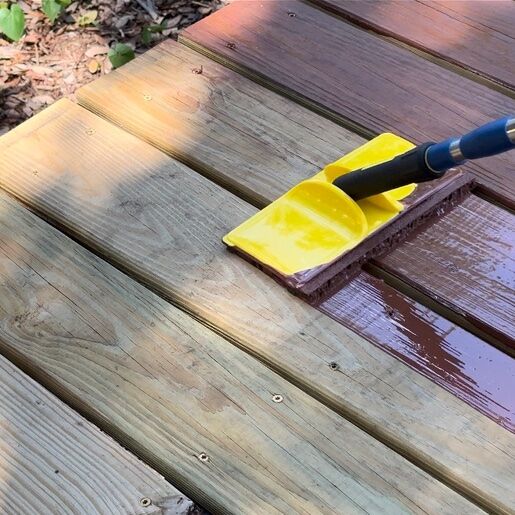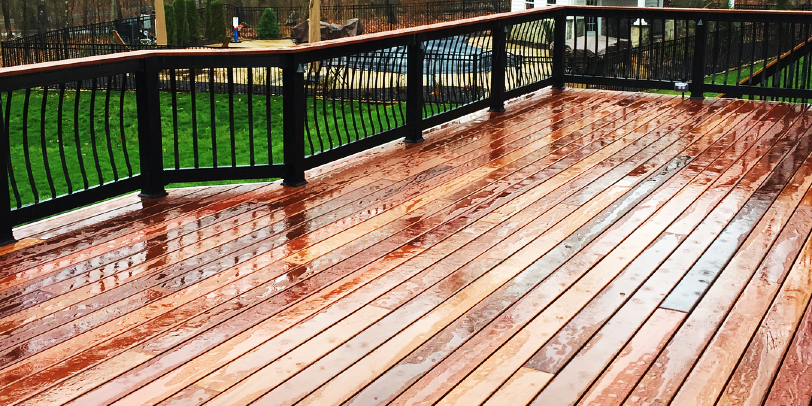Improved Security: Fence Staining and Sealing Solutions
Selecting the Right Discoloration for Your Fence: Tips and Considerations
When it comes to maintaining and boosting the look of your fence, choosing the appropriate stain is vital. With a variety of options available, it can be overwhelming to identify which discolor will best suit your needs. This overview will certainly give you with suggestions and considerations to assist you make a notified decision. We will discover the different sorts of fence discolorations, aspects to consider prior to picking a stain, ideas for preparing your fencing for staining, and the distinctions in between oil-based and water-based spots. In addition, we will delve into selecting the appropriate stain color to enhance your fencing and enhance your outdoor area. By following these standards, you can ensure that your fencing stays secured and cosmetically pleasing for many years to find.
Recognizing Various Kinds of Fence Discolorations

On the various other hand, water-based stains are made from acrylic or latex and offer a more subtle color to the wood. They produce a safety movie externally of the timber, protecting against dampness from permeating in and protecting versus UV damage. Water-based discolorations are much easier to tidy up and have a much faster drying out time contrasted to oil-based spots. They are additionally much less most likely to discolor or break in time.
Picking in between oil-based and water-based spots relies on numerous aspects, including individual choice, the desired look, and the degree of upkeep required. Oil-based discolorations are recommended for surround high-traffic areas or those regularly subjected to severe weather. fence staining. Water-based stains, on the other hand, are a preferred choice for surround houses where look and ease of usage are necessary
When picking the ideal tarnish for their fencing,Comprehending the distinctions between water-based and oil-based spots aids homeowners make an educated decision. Thinking about the particular needs of the fence, such as its place, exposure to sunlight, and desired visual, will guarantee that the selected tarnish supplies resilient defense and improves the overall charm of the fencing.
Variables to Consider Prior To Picking a Discoloration

Another variable to think about is the sort of wood your fence is made of. Different sorts of timber absorb discolorations in different ways, resulting in varying levels of shade intensity and sturdiness. Softwoods like yearn may call for even more regular staining contrasted to hardwoods like cedar or redwood. In addition, specific timbers might be much more vulnerable to concerns like rot or insect problem, which might affect the selection of tarnish to shield and protect the fencing.
The environment and climate condition in your area should also be taken into account. You might require a discolor that gives additional defense against wetness and UV rays if you live in a location with extreme wintertimes or high humidity. Also, if your fence is revealed to direct sunshine for extended periods, a tarnish with UV inhibitors can aid prevent fading and staining.
Lastly, it is necessary to consider your preferred visual. Various stains use various shades and finishes, allowing you to tailor the look of your fence (fence staining and sealing). Consider the total design and style of your building, as well as any kind of neighborhood laws or home owner association standards that might dictate the acceptable discolor colors
Tips for Readying Your Fencing for Staining
To prepare your fencing for staining, begin by extensively cleansing the surface utilizing a light cleaning agent and a pressure washer or scrub brush. Cleansing the fence is a crucial step as it eliminates dirt, grime, and any type of previous finishes that might disrupt the staining process. Begin by moistening the fencing with water and then use a light detergent utilizing a scrub brush or a pressure washer with a low-pressure setting. Scrub the surface area delicately, paying added attention to locations with stubborn discolorations or mold. Wash the fence extensively with tidy water to get rid of all traces of cleaning agent.
This action is essential as discoloring a wet or wet surface area can lead to bad attachment and an uneven coating. Guarantee that the fencing is entirely dry prior to proceeding with the staining procedure.
Prior to staining, examine the fence for any type of damages, such as loosened boards or nails. This item helps to open up the wood pores, enabling the tarnish to pass through much more properly and uniformly.

Contrasting Oil-Based and Water-Based Spots
When picking a tarnish for your fencing, it is essential to compare the qualities and benefits of water-based and oil-based spots. Both sorts of discolorations have their very own benefits and considerations, so it is critical to understand the distinctions between them.
Oil-based discolorations are known for their durability and resistance to tear and put on. They pass through deeply right into look at here the timber, providing outstanding security versus the aspects. They additionally boost the all-natural elegance of the timber by highlighting its grain and appearance. Additionally, oil-based stains tend to last longer than water-based stains, making them a preferred choice for fences.
On the various other hand, water-based spots are a lot more environmentally pleasant and less complicated to clean up. They might not supply the very same degree of security as oil-based discolorations, particularly in harsh climate conditions.
Eventually, the choice between water-based and oil-based spots relies on your particular demands and preferences. Consider variables such as longevity, environmental influence, and simplicity of application when making your choice. Consulting with an expert or looking for recommendations from specialists can also assist ensure that you select the appropriate discolor for your fencing.
Choosing the Right Discoloration Color for Your Fencing
The option of an ideal discolor color for your fence is an essential aspect of improving its aesthetic allure and complementing the general style of your exterior space (fence staining companies). The appropriate discolor shade can transform a level, normal fencing into a striking prime focus that includes depth and personality to your residential property
When choosing a stain shade for your fence, it is essential to think about the design and architecture of your home. Natural tones such as neutrals and browns can produce a cozy and inviting look if you have a typical or classic style home. On the other hand, if you have a modern-day or contemporary home, you may consider going with strong and vivid colors that make a statement.
One more element to consider is the all-natural environments of your residential property. If you have a whole lot of greenery, a stain color that matches the all-natural landscape, such as greens or deep reds, can produce a natural and unified look.
Furthermore, it deserves taking into consideration the maintenance required for different stain colors. Lighter shades tend to show dirt and use even more conveniently, while darker shades can conceal imperfections and need less regular touch-ups.
Eventually, the selection of tarnish shade for your fencing need to mirror your individual design and choices - deck staining. Take the time to check out various alternatives and consult with experts if needed, to make certain that you select the ideal discolor color that improves the elegance and appeal of your fence
Conclusion
In final thought, when it involves choosing the right discolor for your fencing, it is very important to understand the different sorts of stains offered and take into consideration variables such as resilience and wanted look. Preparing the fencing effectively prior to staining is critical for achieving optimum results. Furthermore, contrasting oil-based and water-based discolorations can aid figure out the most effective alternative for your details demands. Selecting the right tarnish shade can improve the overall visual appeals of your fence.
We will certainly discover the different kinds of fence discolorations, aspects to consider prior to choosing a stain, tips for preparing your fence for staining, and the differences in between oil-based and water-based discolorations.Separating in between oil-based and water-based discolorations is crucial when recognizing different kinds of fencing spots. Water-based discolorations are less complicated to clean up and have a much faster drying time contrasted to oil-based stains. Furthermore, oil-based discolorations have a tendency to last longer than water-based discolorations, making them a prominent choice for fences.
In verdict, when it comes to choosing the ideal tarnish for your fence, it is crucial to recognize the different kinds of stains offered and take into consideration factors such as longevity and desired appearance.